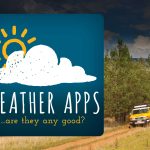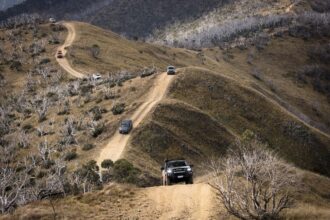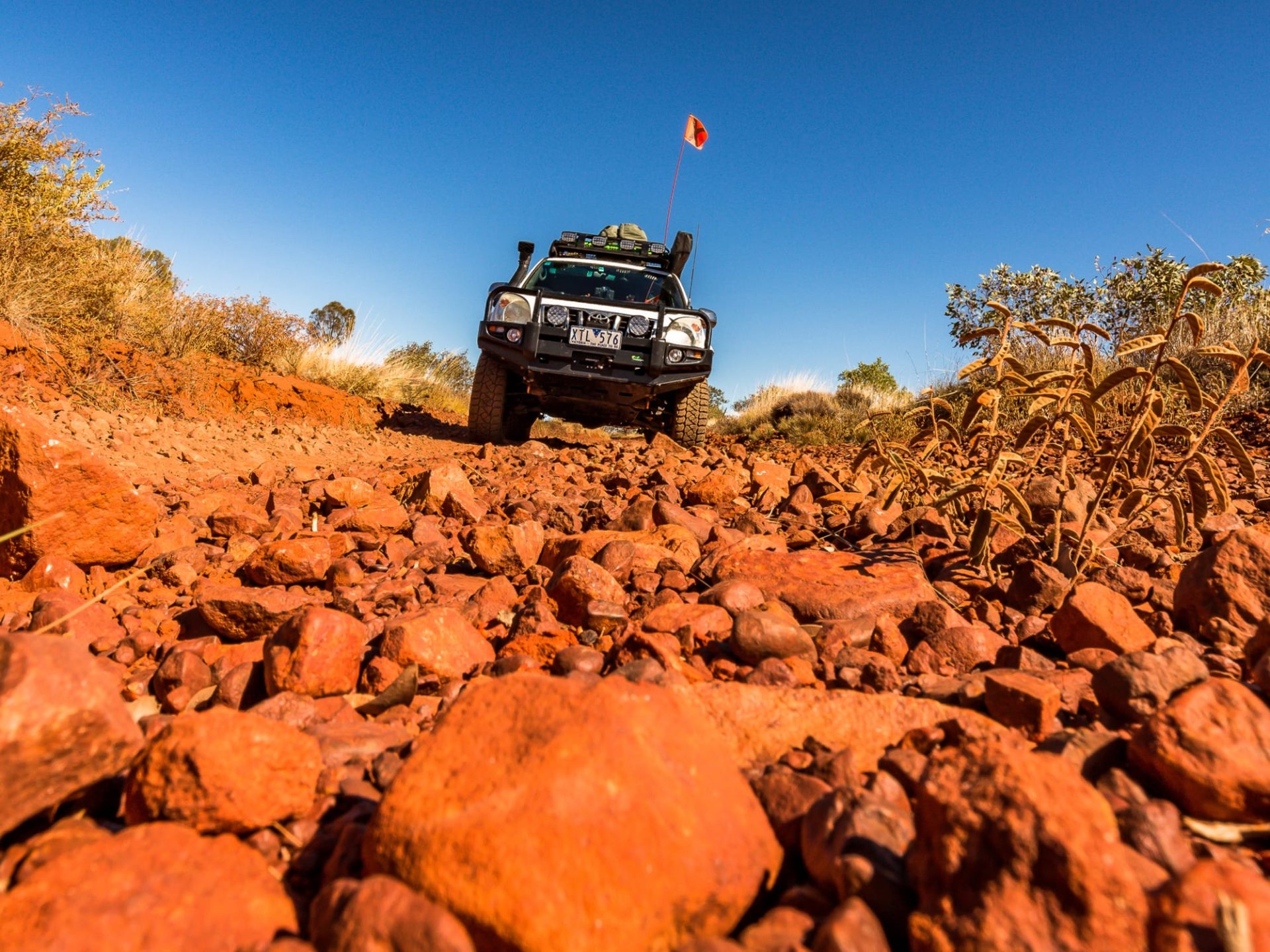Exploring Fraser Island in the off-season can be just as rewarding as the summertime version…
…minus the crowds.
Fraser Island is a powerful place. While on the island your troubles and stress levels melt away like a bad dream easily forgotten in the morning, replaced instead by a blissful sensation like floating on a cloud. And while you are not there, you are wishing you were. It was time to head back but this time it was going to be enjoyed a little differently – off-season. A call to my brother Ned Kelly (aka Glenn) got me the best likeminded travelling companion and our eldest daughters begged to come along too. Sweet. We decided early on that weather would play no role in dampening the spirits; it would be beaten. And we also wanted to drive a few previously unexplored tracks.
For images, videos and the full Unsealed 4X4 experience, read this in our online magazine.
The weather forecasts predicted rain and very strong southerly winds for the first five days so we needed to make camp off the main beach – either inland or on Sandy Cape at the northern tip. A few tarps were thrown into the kits along with plenty of ropes and sand pegs for making our camp as protected as possible. For the remainder, the weather looked pretty decent… meaning we could break camp and set up more sparsely elsewhere for a change of scenery. Maps and GPS locked and loaded, we met the River Heads barge headed for Kingfisher Bay.
That feeling you get when you drive off the barge and place the treads on that hallowed Fraser sand is pure joy… the magic was happening already. We made progress across the island through the native stands of tall timber and dense scrub, then hit the main beach. With favourable tides we decided upon Sandy Cape, and turned north. For once the usual traffic jam of bogged vehicles at the Ngkala Rocks bypass track was absent, beauty! There is nothing quite like recovering a string of cars running high tyre pressures in soft conditions (a great reason to travel in the quiet season). Rounding the tip the wind, which had been building steadily into a gale force, dropped off to almost nothing. Finding a free camp nested in amongst the scrub meant we were completely sheltered from the developing storms.
Making sure we had our tarps and shelters securely in place meant we were to be unaffected by weather and free to roam about camp instead of sheltering inside our tents. Likewise, packing warm clothing made life pleasant.
Day tripping on Fraser Island is fantastic; there are so many options to choose from. Whether it be fishing the long beach gutters, taking a dip at Eli Creek or in one of the inland freshwater lakes, or exploring the inland tracks – you should not find yourself bored. We spent our first day simply relaxing and watching the progress of the tides as they swept right on up to camp, then ebbed back to reveal 50m of beachfront. Staying past Sandy Cape to avoid the weather meant we were at the mercy of the tides and unable to leave camp when the water was up; there are no inland backtracks to retreat into. But we were prepared for this and it was no problem.
Over the next few days we arose early and left camp before the rising water to explore the inland tracks. Checking out the latest HEMA map we decided to explore the northern tracks first and progressively explore further south with each new day. It was a plan that worked out well. If you have not explored Fraser before you may be in for a bit of a shock – the inland tracks offer a sensational driving experience that will put a smile on the dial. Once you leave the beautiful and seemingly never-ending beaches, you immediately enter dense forest and shrubs, then finally tall timbered areas akin to a tropical rainforest.
The rain had actually worked out well, adding to the rainforest atmosphere and creating a dark moody feeling down on the single tracks where very limited light can actually reach the forest floor. Some of the highlights included the freshwater inland lakes, ideal places to cool off in the hotter months; and Lake Mackenzie, which even has its own beach of pristine brilliant white sand. Another place well worth checking out (and further to the north) is Lake Allom – located on the Northern Forests Scenic Drive. Entering the lake waters from the timber steps will usually see you surrounded by inquisitive turtles. The local Rangers stress how important it is to NOT feed the turtles (it is sad to see that some people are stupid enough to do this, as it creates a range of problems ranging from sickness to dependence).
Likewise the dingos should be left to their own devices… food dependence in the past has made them bolder and less wary than ever. In some cases dogs have had to be euthanised because of their boldness with humans.
Another highlight of the inland tracks has to be the access to the west coast of the island. The ruins of huts, lodgings and timber logging can be found along the western side. One spot well worth checking out is the ruins marked as Bellerts Old Hut on the map. Rusting plant machinery along with building ruins are scattered around a fairly large area, which is interspersed with large non-endemic trees.
Having had a taste of the west coast, and with the wind dropping off, we decided to move camp to Awinya Creek for the last few days of the trip. We aimed to spend the remainder of our time relaxing and exploring the calm shores, beaches and campsites. While the north had been fantastic we were eagerly anticipating a change in scenery. Another early dash to avoid the tides and we had travelled overland to be faced with the Awinya Creek crossing. There is a direct track through the creek or an alternative – you enter and head upstream before crossing. Having walked the crossing (and both of us feeling confident in the wading depth of our modified vehicles with their sealed air intakes, minimal electrics and extended breathers) we opted for the deeper and direct route across… a good bit of fun but not a route recommended to most as it has claimed many cars in the past.
Greeted with a completely deserted camping area we set up camp underneath the gazing stares of Sea Eagles, Kites and even an Osprey.
There are plenty of raptors on the island and it is not rare to see them winging past with talons full of writhing fish plucked fresh from the ocean. Other visitors included whales which we saw breaching not too far from shore in the sheltered waters of the bay. Thankfully we only saw a handful of the human species which suited us just perfectly. The feeling of isolation and being close to raw nature is the feeling we chase the most when it comes to off-roading. It is part of what makes travelling in the less popular months more appealing; and if you’re prepared for this properly, it’s even more satisfying than the summer version. Doing it differently and getting to know the less explored areas adds a new zest to areas you have visited before. Go and try it for yourself!
TRAVEL TIPS
- Camping permits are required for camping on Fraser Island. Information can be found here:
https://parks.des.qld.gov.au/parks/fraser/camping.html - It is advisable to book ahead for the Fraser Island ferries to avoid disappointment.
- Be aware of tide times to ensure you do not get stranded.
- Fuel, groceries, bait and essentials can be purchased on the island if needed at Kingfisher Bay, Eurong, Happy Valley and Orchid Beach.
- Police patrol the island. Speed limits and RBT are (rightly) enforced.
- Expect that pedestrians are unaware of your vehicle; people forget they are actually on a road, not just a beach, and they will wander out in front of you. Slow down when approaching.









